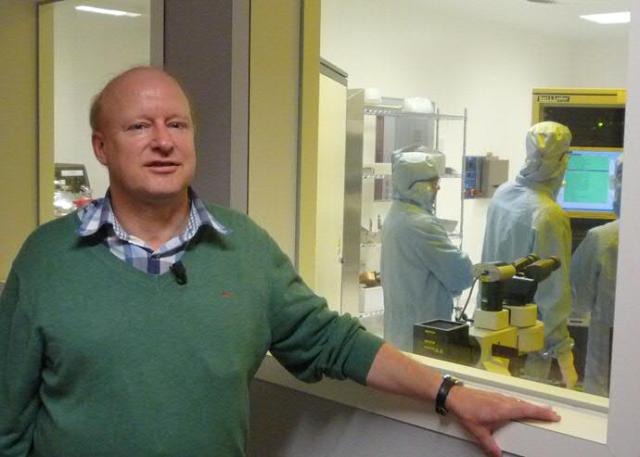Sep 16 2015
Physicists at the University of Groningen, together with colleagues from Utrecht and Brest, have discovered a new principle governing how information is sent between electronic circuits. This could also help generate electricity more efficiently from temperature differences. The results were published on 14 September in the journal Nature Physics.
 Bart van Wees. Photo: Science LinX
Bart van Wees. Photo: Science LinX
The research was led by Bart van Wees, Professor of Applied Physics at the University of Groningen and specialist in fields such as spintronics. This is a form of electronics in which not only the electrons count, but their spin is important too. Each electron has a spin, a quantum mechanical phenomenon that can have two values: up or down. You can ‘code’ an electron with information and transport it using ‘spin currents’.
In the new research Ludo Cornelissen, a PhD student supervised by Van Wees, showed that spin currents could pass through isolators too. In the experiment a conductive material was combined with a non-conductive magnetic material. When electrons collide with the non-conductive material they cannot continue, but a change in the magnetization occurs during the collision that means that the spin is passed on.
‘We designed an experiment where we converted an electron current into a spin wave. It then turned back into an electron current a bit further along,’ Van Wees explains. The spin wave in the non-conductive magnetic material is what is known as a magnon, a disruption in the magnetization that spreads like a wave does through a full stadium: electrons in the material pass the spin on to their neighbours before falling back into their original position. With this form of transport only the spin moves, and the electrons do not travel around. This means heat does not develop and the transport requires very little energy.
‘We are therefore the first to have linked the concept of spin transport to magnetization dynamics and to have shown that spin transport is also possible in isolators’, explains Van Wees. That presents new possibilities. ‘During the transport through the isolator you can manipulate the spin wave, for example through magnetic fields’, explains Van Wees. Spin waves gradually die down due to interaction with the atoms in the crystal grid, but Van Wees and his colleagues have shown that the spin wa0-+ve is maintained for at least 10 micrometres. ‘And that is plenty long enough. However, the longer the wave, the more sensitive it is to change. You could, for example, use it to make sensors that detect magnetism.’
It is also possible to use a spin wave to switch magnetic bits. ‘With spin waves you can switch a smaller surface than with electromagnetic techniques, and the energy consumption is much better too.’ Such applications are not necessarily that far away. ‘I prefer to work with normal materials at room temperature so that the step to applications is small.’
Another possible application is in thermoelectricity, the conversion of temperature differences into electricity. ‘Materials that are suited to this are all electrical conductors, but an electrical conductor will by definition also conduct heat. This means that part of the temperature difference will leak away.’ The few companies that want to bring thermoelectricity onto the market are therefore struggling with yields that are way below the theoretical possibilities. ‘With our material you can generate a spin current in an isolator that therefore does not let any heat through. That opens the way to a higher yield.’